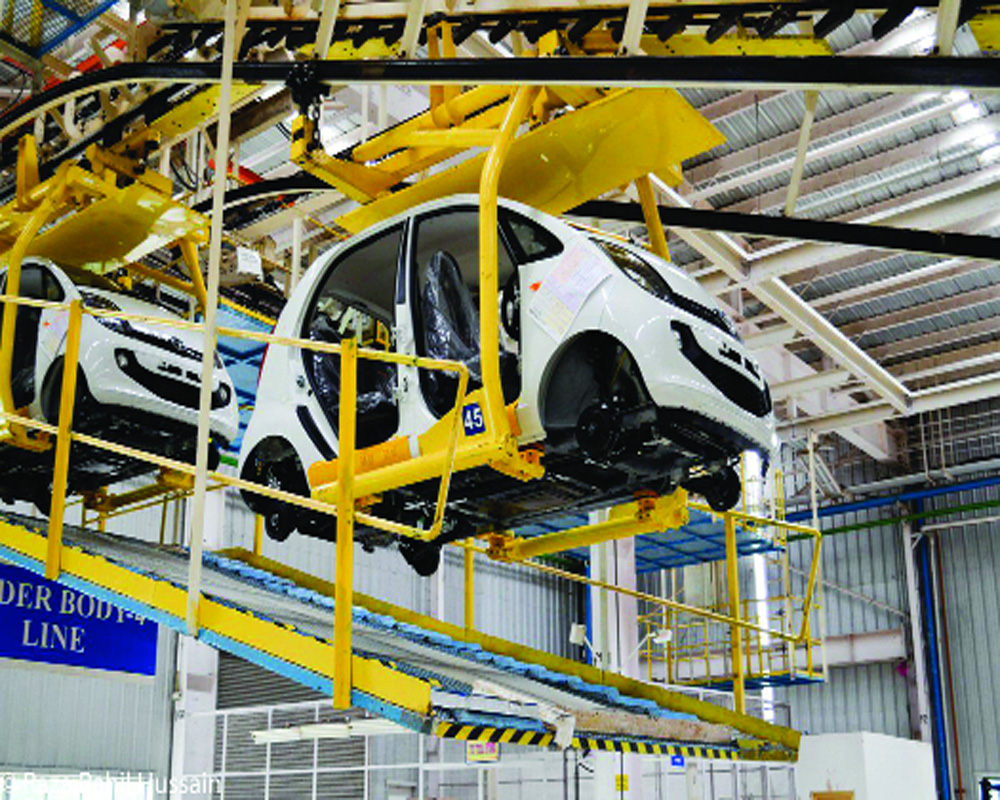Tata Nano factory’s relocation from West Bengal to Gujarat is a poignant reminder of how political myopia derailed a golden opportunity for Bengal’s industrial revival
In a moving tribute to late Ratan Tata, Prime Minister Narendra Modi spoke of the many dimensions of the industrial icon’s personality that endeared him to the people. Pursuit of excellence and empathy were among the most dominant traits in late Ratan Tata leading him to pilot the Tata conglomerate towards greater heights of success and expansion. Under his two decades of stewardship, the Tata group witnessed a phenomenal spread of its global footprints and established itself as a vibrant brand.
Perhaps like many others from West Bengal, Ratan Tata’s passing brought to my mind the Singur – Tata Nano factory episode. Those dark days of lost opportunities, signified a major recul, for the hope of an industrial regeneration in the state. A party and government which had, for over three decades patronised, militant trade unionism had suddenly decided to reverse that trend. It was ironic to see it clamber for investment in a feverish pitch after having presided over the de-industrialisation of the state.
The destruction of Bengal’s once formidable industrial might is a map of the CPI(M) rise in the state. Howrah, once famed as the ‘Sheffield of the east’, turned into West Bengal’s principal industrial graveyard under the communists. As early as the 1920s Dr Ambedkar had seen through and realised the often-duplicitous approach of the communist-led trade-unionism. In the pages of his Bahishkrut Bharat he wrote how communists were ‘trying to capture the labour movement in the country’ and that ‘the main aim behind the strike’ was ‘not to improve the economic conditions of workers but to train them for revolution.’ He could foresee the cancer that was trying to claw into India’s industrial entrails.
Let us recall how then West Bengal Chief Minister Jyoti Basu had sanctioned protests against the Metro Rail project. The communist-driven frensied trade-unionism destroyed several iconic public undertakings such as the Haringhata Milk Dairy, set up by Dr BC Roy had created a milk supply chain across the state while generating thousands of jobs.
Much like Mamata Banerjee who has refused to enlist West Bengal in the Centre’s flagship ‘Aspirational District Project’ and remains lukewarm to the ‘Ekalavya Vidyalaya’ scheme, Basu in 1986, had forbade the setting up of Navodaya Schools in the state. In 1974, three years before he came to power as Chief Minister, Basu had organised a relay protest in front of the Hongkong Bank regional office in Kolkata to stall the installation of computers. Yet ironically the same Jyoti Basu in 1994, commissioned Arthur Anderson, a multinational business consultant, to carry out a study of the chances of West Bengal’s industrial revival based on foreign investment. But progress was halting, it lacked a roadmap.
Thus, when Ratan Tata decided to invest in the state it was a whiff of more than fresh air, it was a long-needed gush of wind for breathing fresh life into a dying industrial ethos.
A hopeful Tata had then said that he had ‘scanned the country and looked at various locations before deciding to locate this rather revolutionary project which will give India’s truly people’s car here in Bengal.’ It announced a new chapter, a historic opportunity for Bengal’s industrial rejuvenation. But that did not happen. Political selfishness, and one-upmanship between the ruling CPI(M) and the opposition Trinamool Congress, leading a blind political opposition to the proposal led to its grounding. In trying to bolster her flagging political prospects, Mamata Banerjee, desperately and deliberately jettisoned the project. Her political arrogance and self-centeredness led to its sinking. In her last fifteen years at the helm, the state has failed to recover from that mindless assault and pushback. An epic opportunity was lost, with a beleaguered Tata announcing his exit from the state due to political reasons. The people of West Bengal lost out.
Their hopes of a possibilities-filled future receded in a mist of uncertainty. Both the ruling dispensation then and the opposition were responsible for pushing the state into a dark alley. The alley remains dark even to this day. Ratan Tata announced that he was shifting the car plant to Gujarat’s Sanand. It was a plant that would eventually grow into a mega 1100-acre unit. Narendra Modi was then Chief Minister of Gujarat. As Tata was announcing his exit from West Bengal, Modi texted him ‘Welcome’, leading to the proposed Nano factory shifting to Gujarat. Modi told Tata that the project was not only his, but ours.
Later he had observed, in a lighter vein, that his one-rupee SMS had brought about a major boost to Gujarat’s industrial prospects. Ratan Tata later said that he would forever remain grateful to Modi for placing faith in him and inviting him to Gujarat during those difficult days. The saga of the Singur-Tata Nano factory’s shift to Gujarat is a saga of petty political squabbles, acute selfishness, arrogance and lack of true commitment to West Bengal’s future and progress. That mindset and outlook among the ruling dispensation in the state still dominate. It has to be thrown overboard. Only then will West Bengal’s industrial rejuvenation appear to be a possibility.
Source
https://www.dailypioneer.com/2024/columnists/west-bengal—s-lost-opportunity.html
(The views expressed are the author's own and do not necessarily reflect the position of the organisation)


